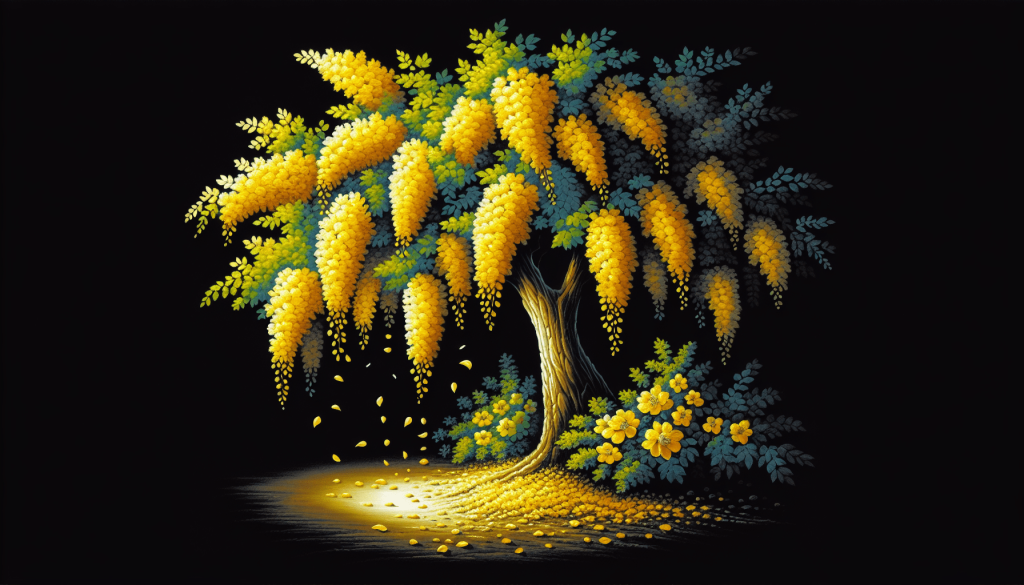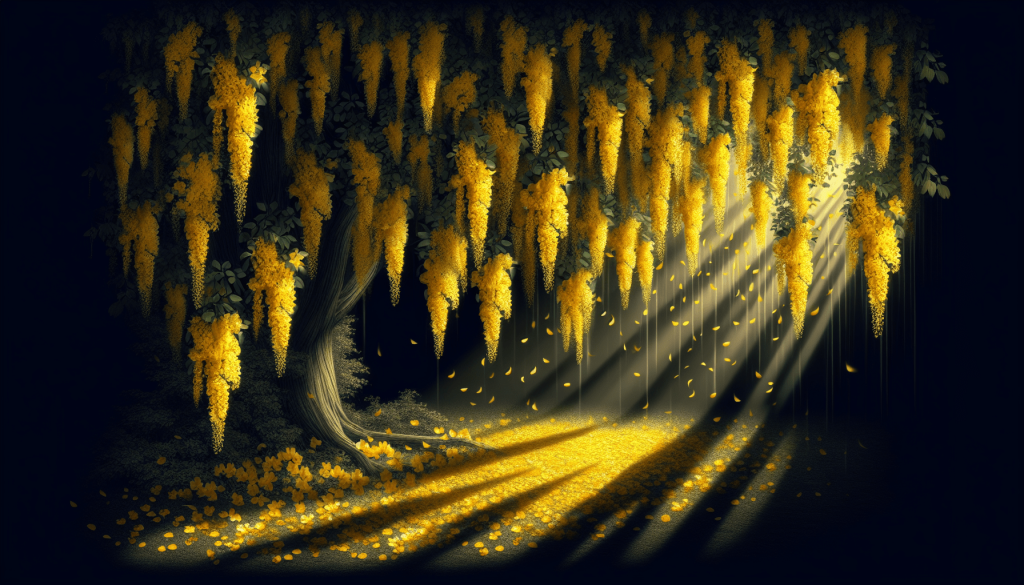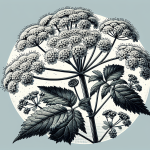This post may contain affiliate links. As an Amazon Associate, we may earn commissions from qualifying purchases.
Have you ever strolled through the countryside or your local park, admiring the vibrant flora, only to wonder if some of these beautiful plants could be harmful? It’s a question worth asking, particularly when it comes to the Laburnum tree (Laburnum anagyroides).
The Laburnum tree, native to the United Kingdom, is as enchanting as it is dangerous. Known for its striking yellow flowers that cascade like golden waterfalls, this tree is both a highlight and a hazard in many gardens and landscapes. In this article, we aim to unravel the mysteries and dangers of the Laburnum tree, providing you with essential insights to keep you and your loved ones safe.

The Beauty of Laburnum Anagyroides
Appearance and Characteristics
The Laburnum tree, also commonly known as the Golden Chain or Golden Rain, is a deciduous tree that adds a splash of brilliance to any environment. Typically, you’ll find this tree growing up to 7 meters in height. Its most distinctive feature is its pendulous yellow flowers that bloom in late spring, creating an eye-catching, almost magical display.
| Feature | Description |
|---|---|
| Height | Up to 7 meters |
| Flowers | Pendulous, bright yellow, bloom in late spring |
| Leaves | Compound, with three oval leaflets |
| Bark | Smooth, greenish-brown initially, becomes rougher with age |
Habitat and Growth Conditions
Laburnum anagyroides thrives in well-drained soil with plenty of sunlight. It’s often found in gardens, parks, and rural areas throughout the United Kingdom. This tree isn’t particularly fussy about soil types, making it a popular choice for ornamental planting.
However, take note: while it appears attractive and innocuous, the Laburnum tree hides a deadly secret.
The Dangers of Laburnum
Toxicity Overview
Every part of the Laburnum tree is toxic, containing compounds called cytisine and related alkaloids. These toxic elements can have severe effects on both humans and animals if ingested. The seeds, in particular, are highly poisonous and are often mistaken for peas by children and pets.
Symptoms of Poisoning
Consumption of any part of the Laburnum tree can lead to serious health issues. Symptoms begin with intense abdominal pain and nausea, followed by vomiting and diarrhea. In severe cases, the toxins can cause tremors, convulsions, and even respiratory distress.
| Stage of Poisoning | Symptoms |
|---|---|
| Initial | Abdominal pain, nausea |
| Within a Few Hours | Vomiting, diarrhea, irregular heartbeat |
| Severe Cases | Tremors, convulsions, respiratory failure |
Case Studies and Incidents
Though rare, there have been several documented cases of Laburnum poisoning, especially involving children. Often, these incidents occur because the tree’s seeds resemble peas, making them particularly deceptive and dangerous.
One notable case involved a child in the UK who consumed just a handful of seeds. Prompt medical intervention was able to mitigate the worst of the symptoms, but it highlighted the importance of recognizing and respecting the tree’s toxic potential.
Safeguarding Against Laburnum Poisoning
Identification and Awareness
Awareness is your best defense against Laburnum poisoning. Familiarize yourself with the tree’s appearance and educate others—especially children—about the dangers it poses.
Safe Handling
If you have a Laburnum tree in your garden, extra caution is warranted. Ensure that children and pets are kept away from the tree, especially during the flowering and seeding times. Consider fencing off the area or even removing the tree if it poses too great a risk.
Emergency Response
If you suspect someone has ingested part of the Laburnum tree, seek medical attention immediately. Do not wait for symptoms to appear, as the effects of poisoning can escalate quickly. Provide medical personnel with as much information as possible, including the part of the tree ingested and the approximate amount.
Role of Laburnum in the Ecosystem
Ecological Importance
Despite its toxicity, the Laburnum tree plays a crucial role in its ecosystem. It serves as a food source for certain insect species and provides shelter for various forms of wildlife. Pollinators, such as bees, are particularly attracted to its vibrant flowers.
Environmental Impact
Laburnum trees can also contribute positively to the environment by stabilizing soil and preventing erosion. Their hardy nature allows them to thrive in various conditions, making them versatile contributors to their habitats.
However, the potential risks to humans and animals often overshadow these benefits, necessitating a balanced approach to their cultivation and management.

Laburnum in Landscaping
Decorative Use
The Laburnum tree’s visual appeal makes it a popular choice for ornamental landscaping. Its golden flowers are often used to create stunning visual effects in parks and gardens. When planted and managed correctly, Laburnum can add a touch of elegance to any landscape.
Safety Measures in Garden Design
When integrating Laburnum into a garden, it’s critical to consider placement and safety. Plant the tree in areas that are less accessible to children and pets. Additionally, incorporating signage to warn people about the tree’s toxic nature is a prudent measure.
Alternative Plants to Consider
Non-toxic Alternatives
If the risks associated with Laburnum are too great, consider planting non-toxic alternatives that offer similar aesthetic value. Here are some options:
| Plant | Description |
|---|---|
| Japanese Wisteria | Beautiful cascading flowers, non-toxic |
| Mock Orange (Philadelphus) | Fragrant white flowers, safe for humans and animals |
| Forsythia | Bright yellow flowers, hardy and non-toxic |
Benefits of Alternatives
Non-toxic alternatives not only enhance your garden’s beauty but also provide peace of mind. By choosing safer plants, you minimize the risk of accidental poisoning while still enjoying a vibrant and diverse garden.
Conclusion
The Laburnum tree (Laburnum anagyroides) is a remarkable yet dangerous plant. Its stunning appearance belies the serious risks it poses to humans and animals alike. By understanding its characteristics, recognizing its dangers, and taking appropriate safety measures, you can appreciate this tree’s beauty while ensuring a safe environment.
Armed with this knowledge, you are better prepared to make informed decisions about incorporating Laburnum—or its safer alternatives—into your garden or landscape. Have you ever encountered a Laburnum tree, and if so, how did you manage the potential risks it posed?








